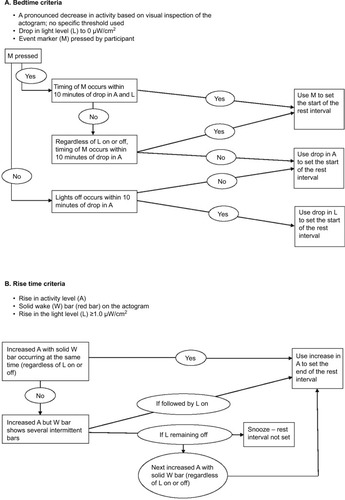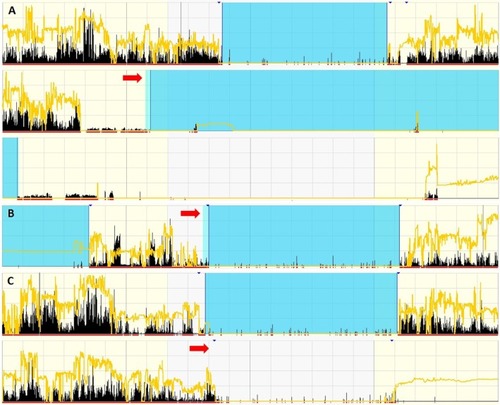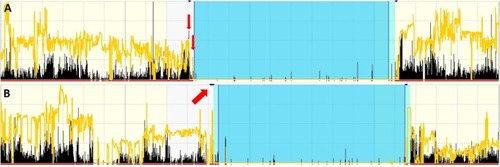Figures & data
Figure 1 Decision tree for defining the rest interval.
Abbreviations: A, activity level; L, light level; M, event marker; W, wake.

Table 1 Rest interval: intraclass coefficients between default scoring and scorers (upper panel) and intraclass coefficients between two scorers (lower panel)
Figure 2 Examples of default setting issues.

Figure 3 Examples of participant-related issues.

Figure 4 Examples of inter-scorer issues.

Table 2 An example of an event diary
